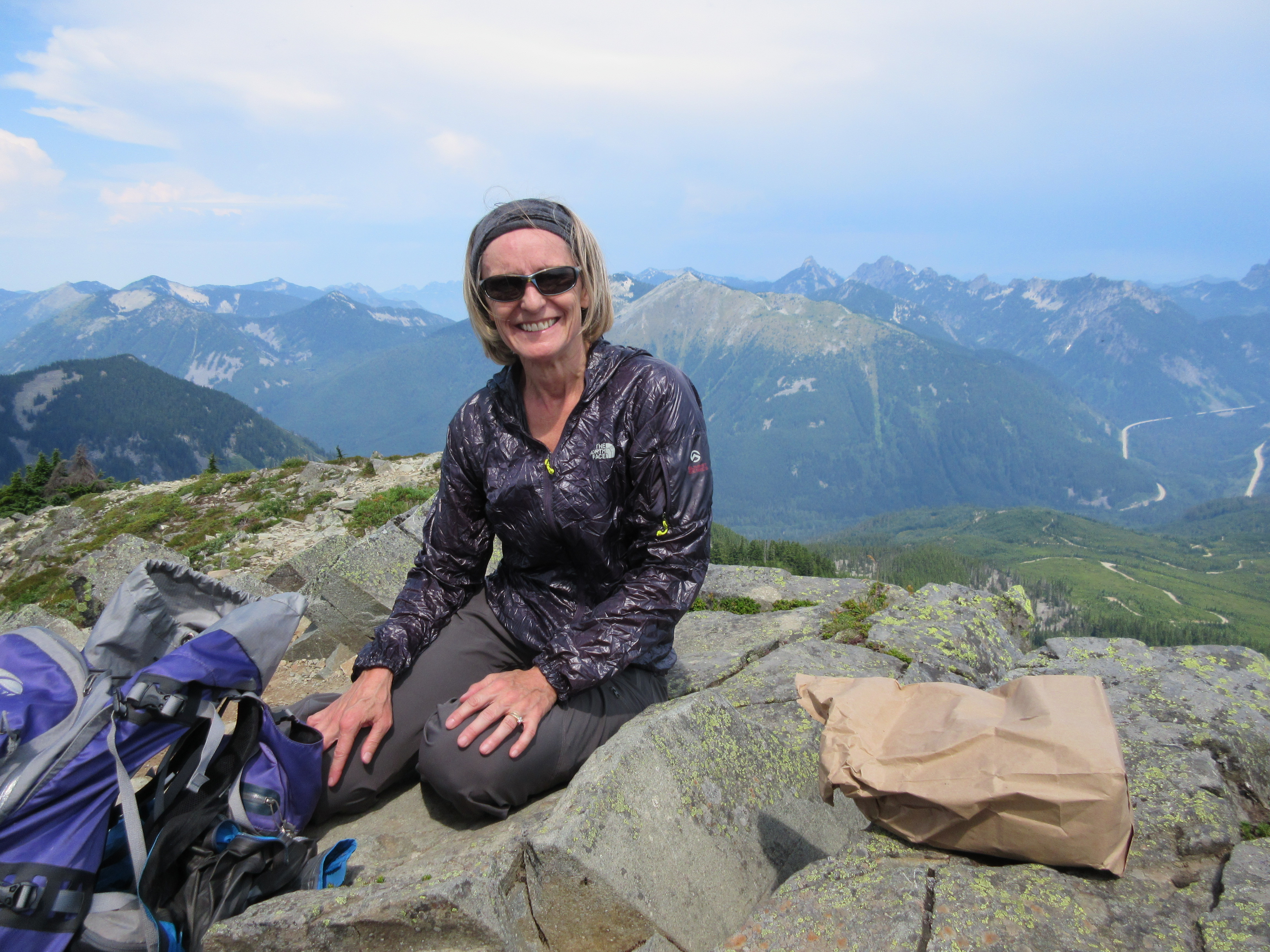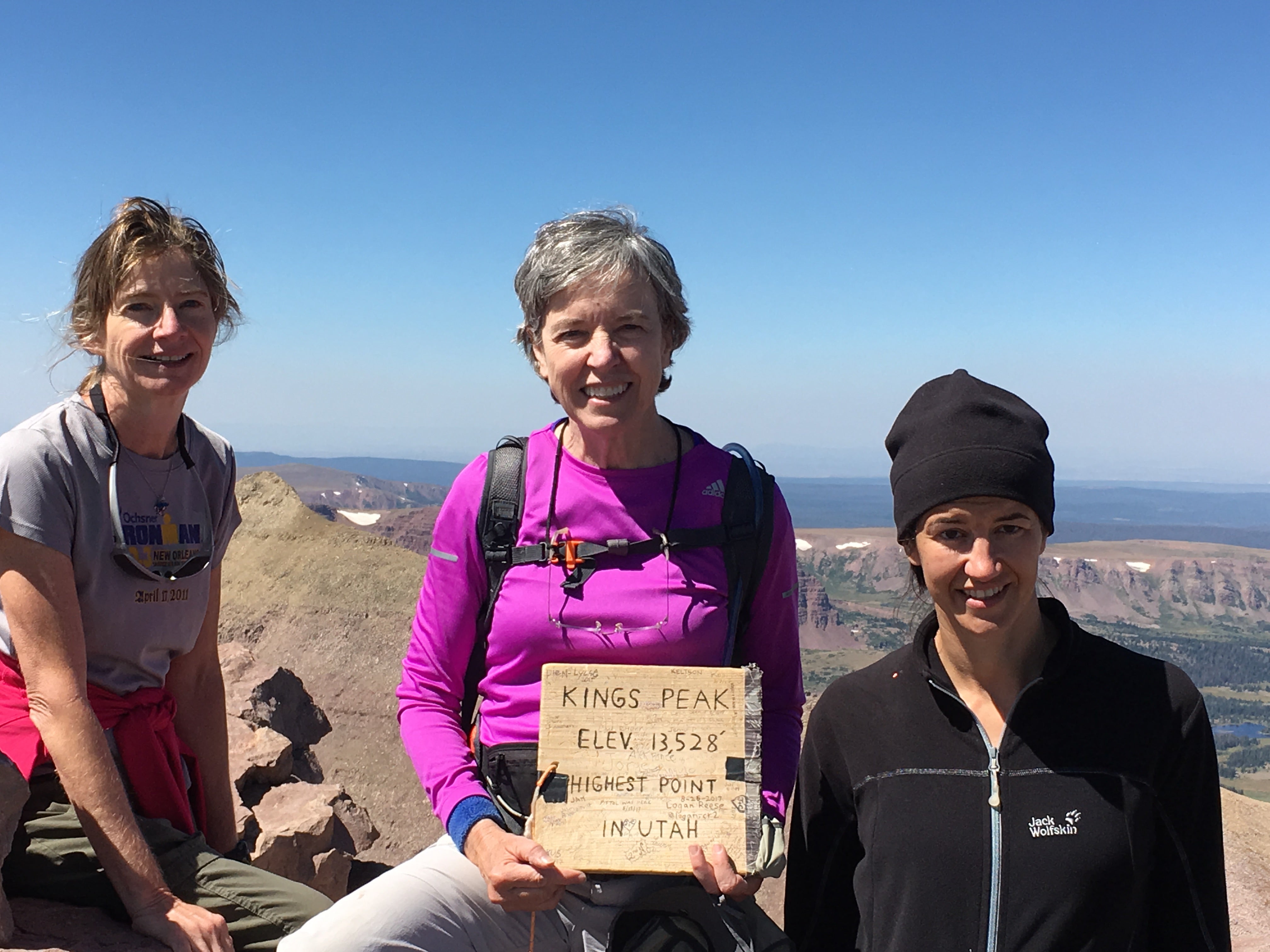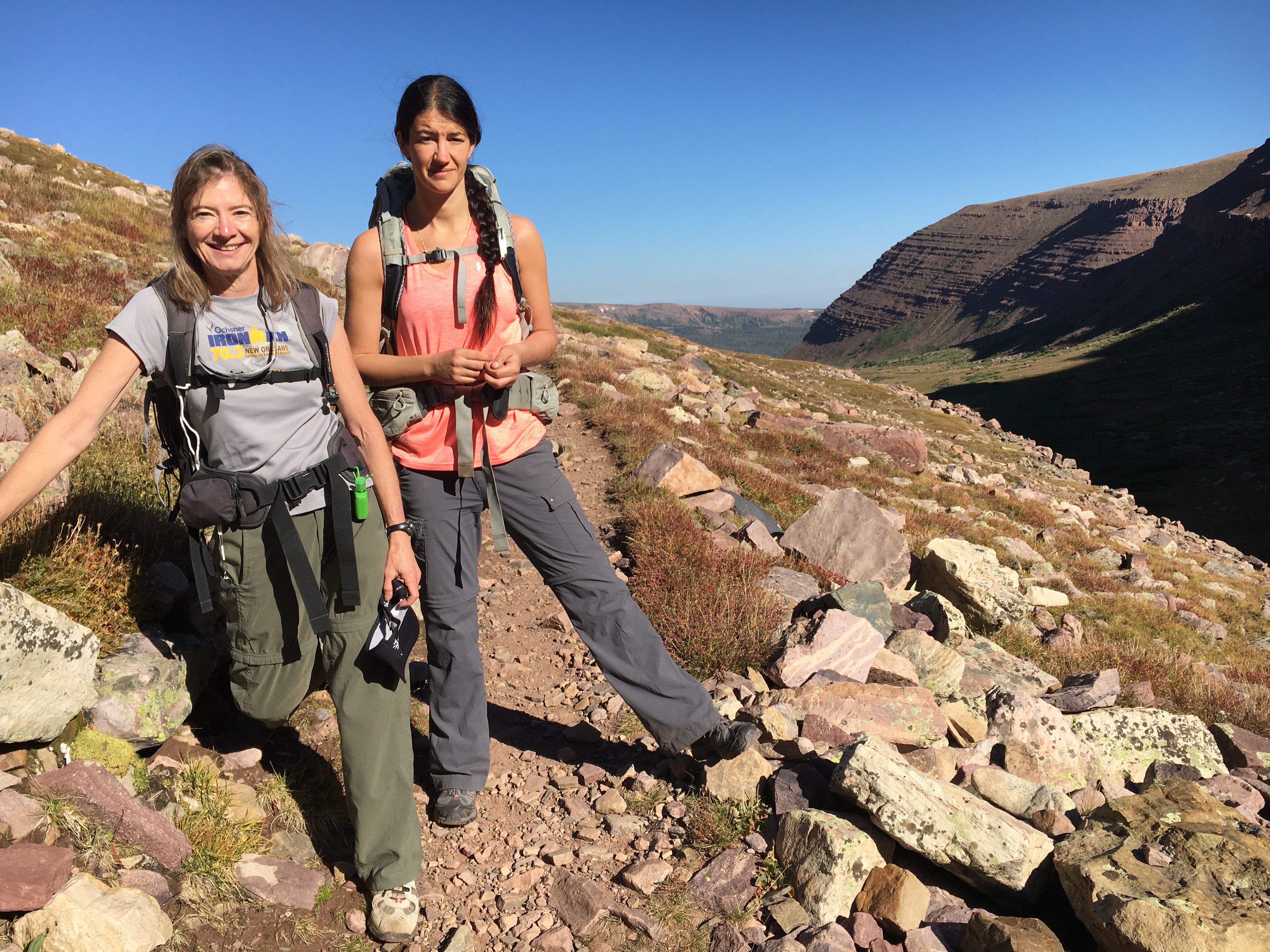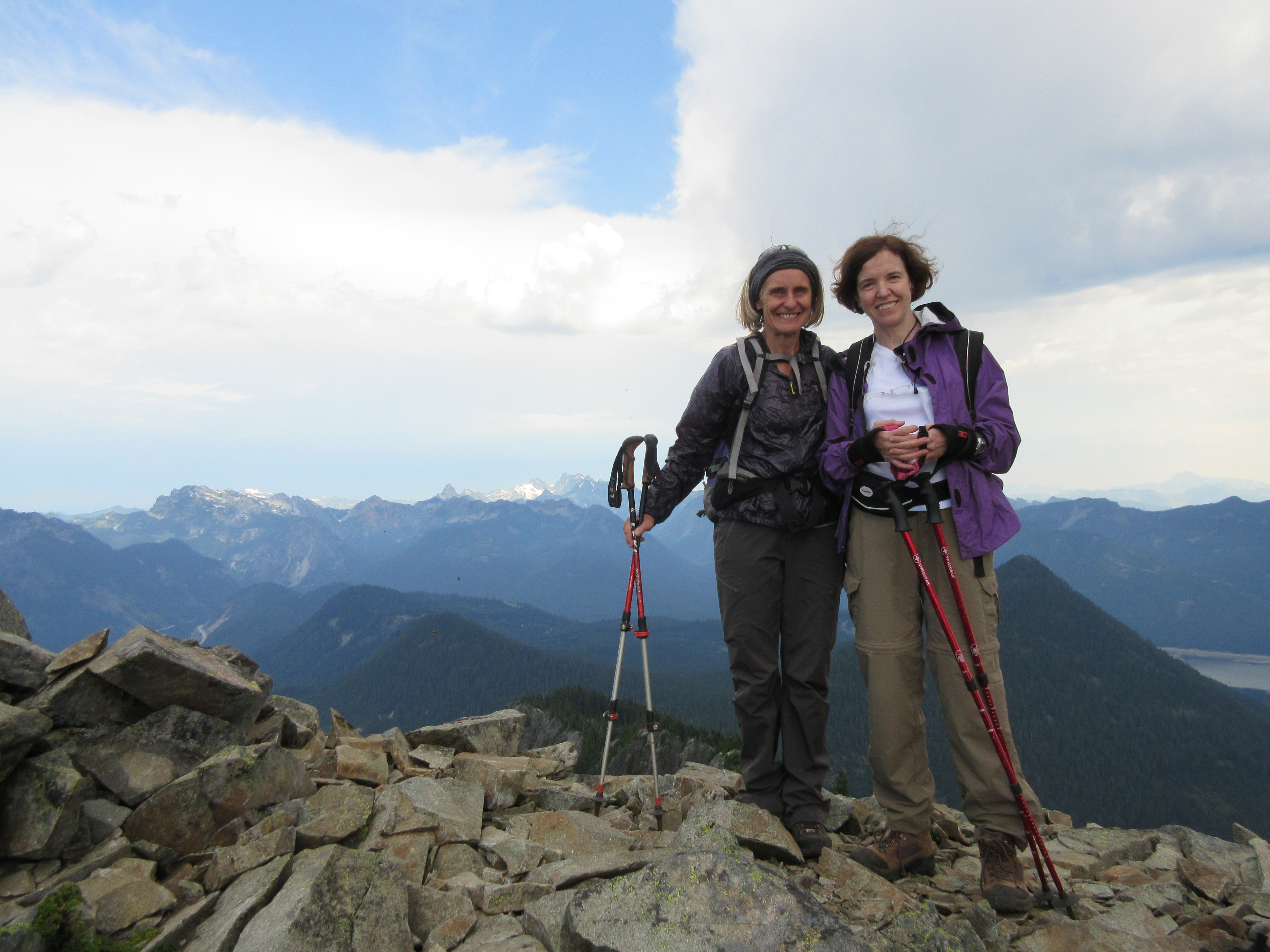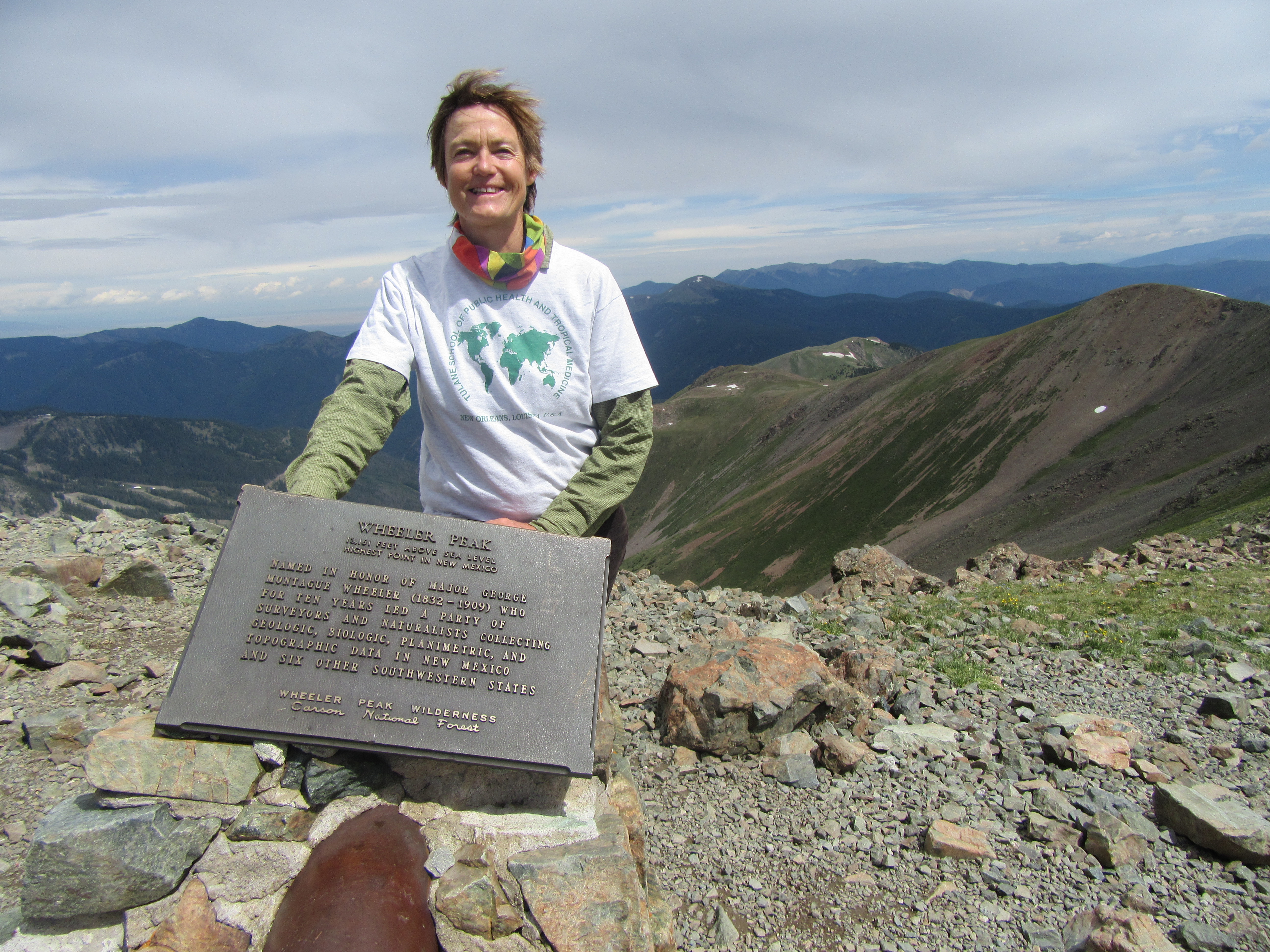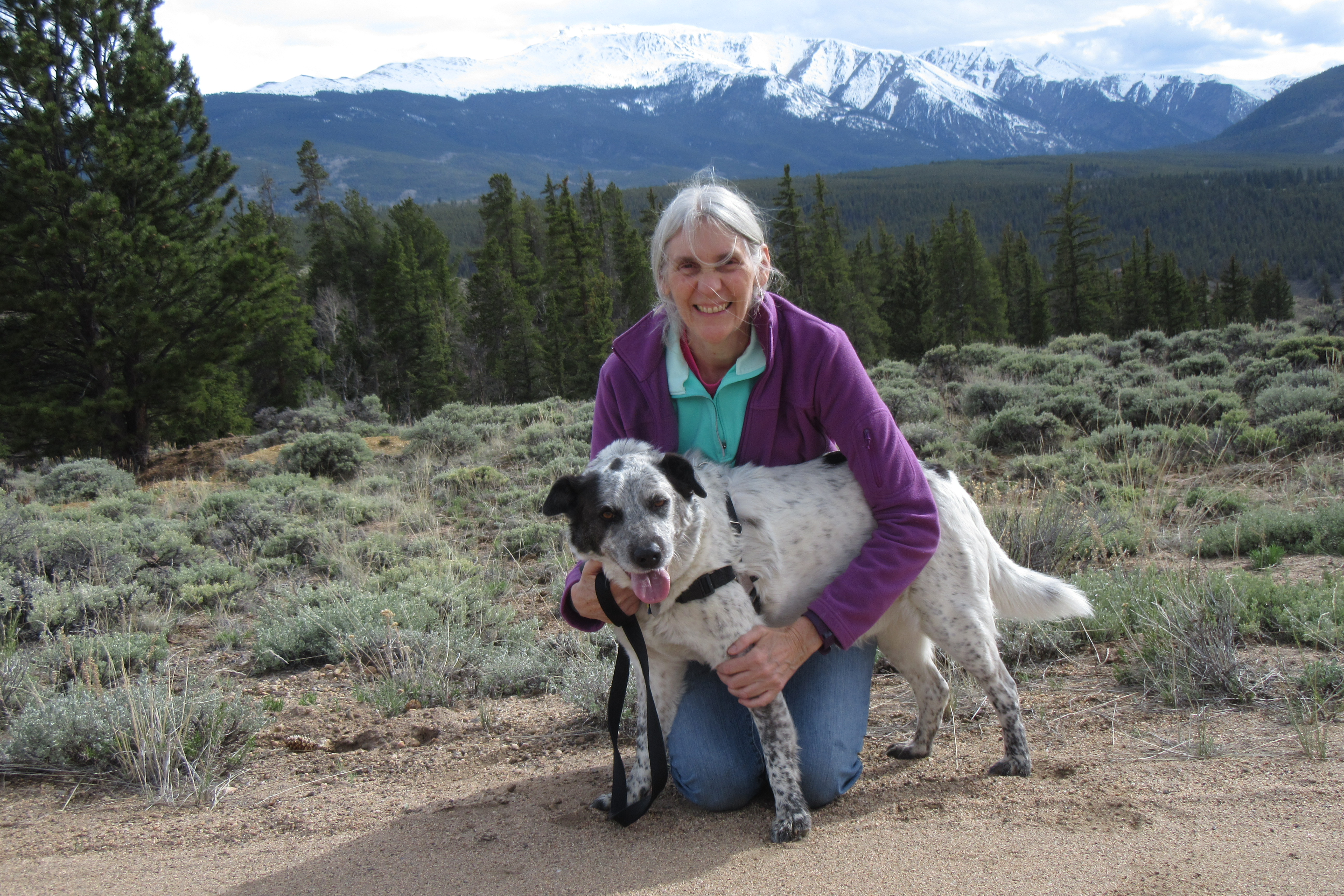
BY AGE 60, Dr. Jane Bertrand, professor of health policy and management, had clocked over 20 years as a faculty member at the Tulane School of Public Health and Tropical Medicine, as well as another eight at Johns Hopkins. She was itching for a new kind of challenge.
Bertrand had traveled extensively overseas but not much in the U.S. west of the Mississippi. She loved hiking but found little opportunity in Louisiana, where the highest mountain is only 535 feet. She found she wanted to connect with friends and family, now scattered across the country. She also sought some “equal time” to her husband Bill Bertrand, professor of global community health and behavioral sciences, who thought nothing of traveling to Patagonia to fly fish.
She stumbled onto the idea of climbing a mountain in every state and soon discovered “highpointing,” the sport of attempting to reach the highest point in all 50 states. An established but little-known pastime, highpointing has its own club, website, and convention. Jane was hooked on trying.
Vowing to avoid mountains that would require technical climbing, especially on icy slopes, she set out to see how far she could get. Her strategic mistake, she says, was starting with the easy states. Difficulty is defined by what is known as the Martin classification, ranging from 1, or easiest, to 10, most difficult. Denali, located in Alaska, is the highest peak in North America, with a rating of 10.
By age 65, after a lackluster start, she’d only reached 11 highpoints, none more difficult than a 2. Panicked, she picked up the pace, churning through the remaining easy and moderate highpoints. Over time, her interest in this quirky hobby evolved into an obsession, then an addiction. “If I could do No. 40, why not try No. 41?” she recalls thinking. “If No. 41, why not…” The remaining mountains escalated each year in degree of difficulty.
Despite her vow to avoid mountains requiring technical climbing, she got a trial-by-fire introduction to it on California’s Mt. Whitney, the highest point in the continental U.S. at 14,505 feet. She paid for the exhilaration of summiting with the misery of shivering through the night after losing her tent to the wind.
After she triumphantly summitted Mt. Hood in Oregon, she had to drag herself back to the lodge, barely able to put one foot in front of the other. Every muscle screamed, “this is why 69-year-olds do not climb Mt. Hood.”
Over her decade-long pursuit, she recruited 63 people to hike with her, ranging in age from four months to 71 years. Among them were current and former SPHTM faculty, including Katherine Andrinopoulos, Bill Bertrand, Julie Hernandez, David Hotchkiss, Susan McLellan, Nancy Mock (MPH ’79, DrPH IHD ’85), and Ilene Speizer, as well as alumnae Betsy Wild Abente (MPH IHD ‘09), daughter Katherine Bertrand (MPH IHD ‘11), Nancy Baughman Csuti (MPH MCH ’86, DrPH IHD ‘95), Lisanne Brown (MPH IHD ’90, PhD EPI ’95), John Hembling (IHD MPH ’06). Evie Landry (MPH IHD ‘82), Lisa Manhart (MPH IHD ‘94), and Cindy Stanton, (MPH HEDC ‘85).
Four months short of her 70th birthday, she completed #46 and had done alternative hikes in the remaining four states. She has captured her quest in a memoir entitled You Started WHAT after 60? Highpointing across America.
Jane completed this project with bittersweet emotions: satisfied at reaching 46 highpoints, relieved to leave technical climbing behind her, yet wistful that this adventure had come to an end. Says Jane, “it had been, well, a highpoint of my life.”
Find Jane Bertrand’s book online at most major retailers. For more on the backstory of the book, check out her author page, and to see more photos go to janebertrand.com.
